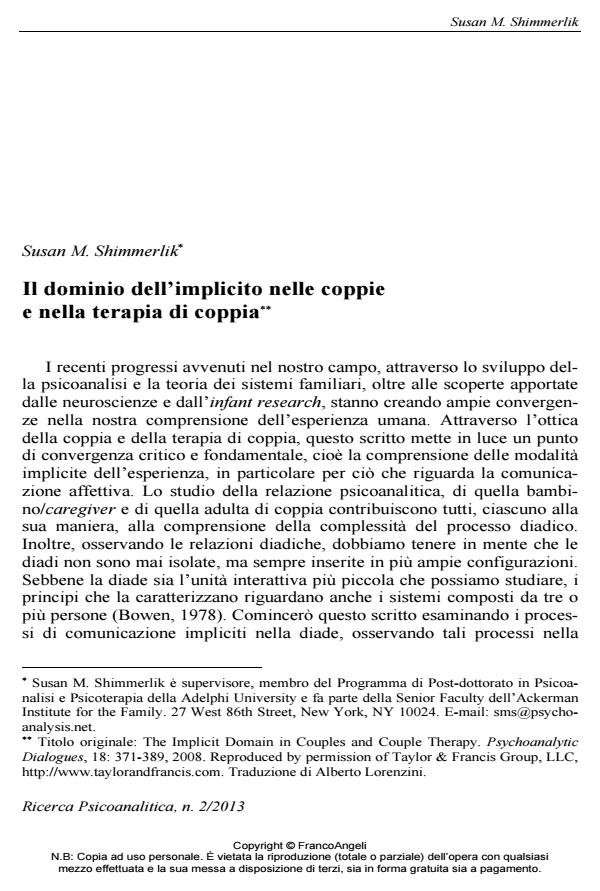The implicit domain in couples and couple therapy
Journal title RICERCA PSICOANALITICA
Author/s Susan M. Shimmerlik
Publishing Year 2013 Issue 2013/2
Language Italian Pages 20 P. 9-28 File size 230 KB
DOI 10.3280/RPR2013-002002
DOI is like a bar code for intellectual property: to have more infomation
click here
Below, you can see the article first page
If you want to buy this article in PDF format, you can do it, following the instructions to buy download credits

FrancoAngeli is member of Publishers International Linking Association, Inc (PILA), a not-for-profit association which run the CrossRef service enabling links to and from online scholarly content.
Developments in psychoanalysis and family systems, as well as findings from cognitive neuroscience and research in infant development are pointing to convergences in our understanding of the human experience. One central point of convergence has been the understanding of implicit modes of experience, particularly as this relates to affective communication. Through the lens of couples and couple therapy, this paper examines the ways in which the patterning of couple and family relationships takes place in the enactive domain through nonconscious, implicit communication processes. With the understanding that it is in the nature of implicit experience that it must be enacted to be accessed, this paper argues that some of that which is stored in the implicit domain remains embedded and enacted in one’s most intimate relationships and therefore can only be accessed within the context of those relationships. This paper then explores some of the implications of implicit processes as this relates to the triad of the therapist and the couple in couple therapy.
Keywords: Implicit domain, couple therapy, family systems, BCPSG, communication processes
Susan M. Shimmerlik, Il dominio dell’implicito nelle coppie e nella terapia di coppia in "RICERCA PSICOANALITICA" 2/2013, pp 9-28, DOI: 10.3280/RPR2013-002002